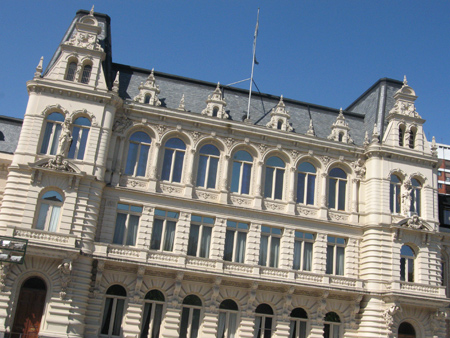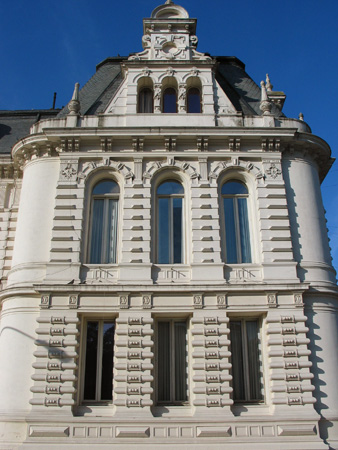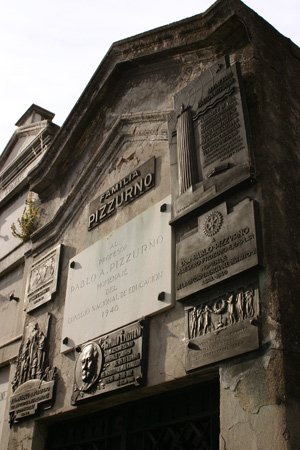
Another vault tucked away in the middle of a narrow walkway, the Pizzurno family reformed the education system in Argentina at the turn of the 20th century. Pablo Pizzurno, born in Buenos Aires in 1865, reached a professional limit at home so went to Europe to learn more about education there. After visiting several countries, Pablo returned to Argentina & implemented major changes: a focus on manual tasks, physical education classes, field trips, music recitals… in short, anything to make the student an active participant in their own education.
Appointed Inspector General of secondary education, more reforms began in 1900. Pablo Pizzurno eventually occupied top education positions in a number of provinces throughout Argentina & spread his ideas further. After publishing several books & teaching others about his experience, Pablo passed away in 1940. Most of the plaques on the family tomb are accordingly late Art Deco:
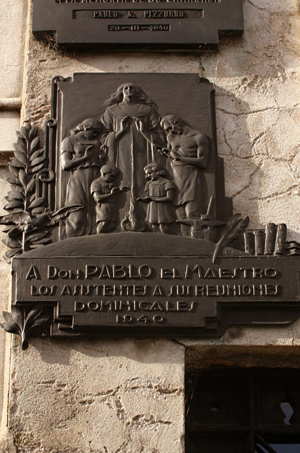
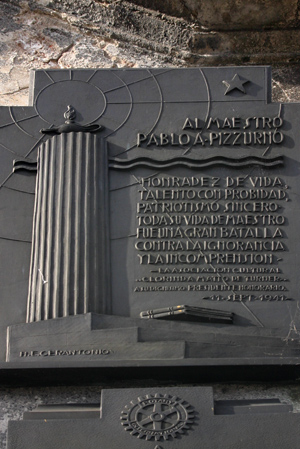
Apart from Pablo, brothers Juan Tomás & Carlos Higinio were also educators. In honor of their collective contribution to Argentina, the one-block street in front of the national Ministry of Culture & Education is named after them:
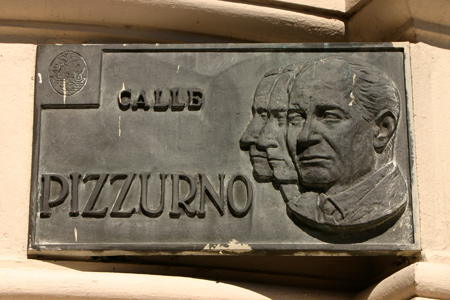
It’s an appropriate honor. The building which houses the Ministry was built in the 1880s by request of Petronila Rodríguez de Rojas as a primary girls’ school for 700 students… the largest private grant to Argentina at the time. It served as a school only for a few years before being occupied by the Supreme Court until their building was complete on Plaza Lavalle. Afterwards, it became home to the Ministry of Education. Often referred to as the Palacio Pizzurno, it’s hard to miss. The exterior remains spectacular in spite of both interior & exterior modifications:
